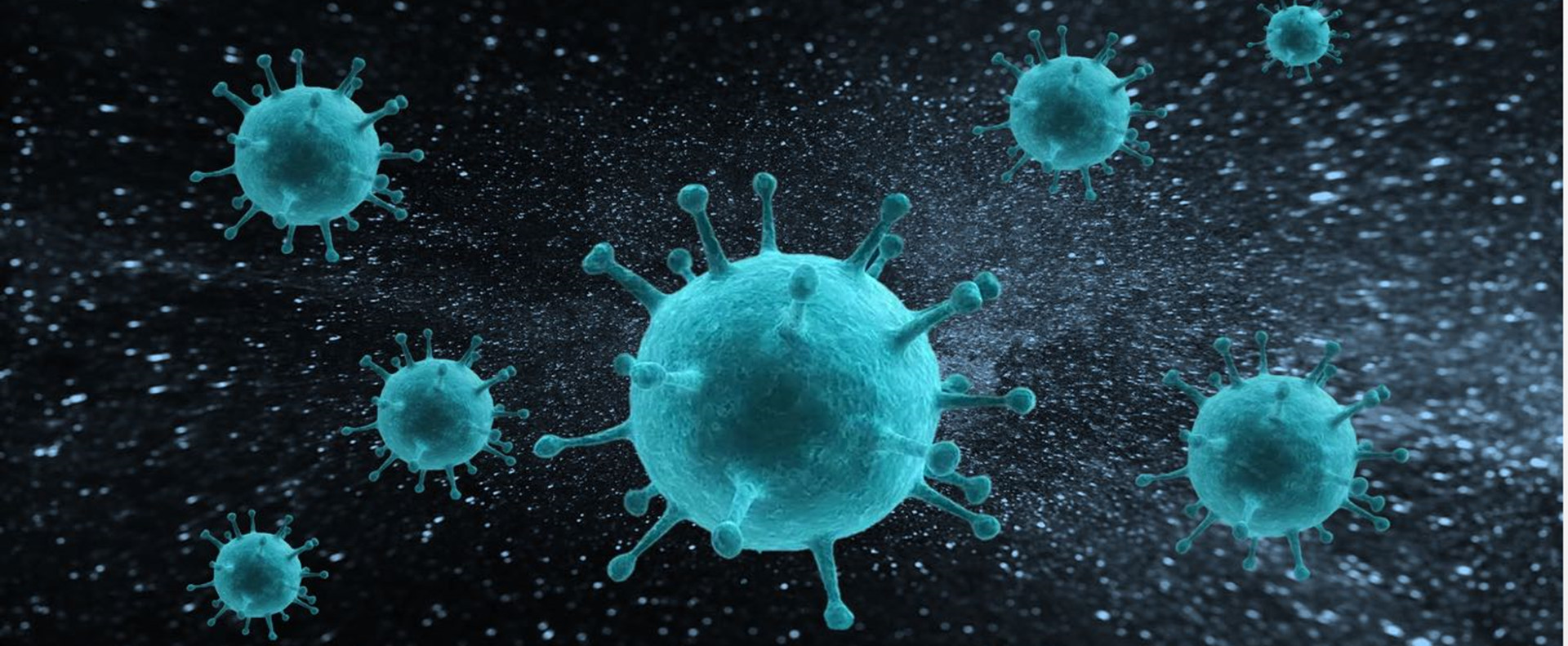Highlights
Arginine Monomethylation by PRMT7 Controls MAVS-mediated Antiviral Innate Immunity

Viral infection (Credit: IHB)
Innate immunity is the host’s first line of defense against microbial infection. In response to Ribonucleic Acid (RNA) virus infection, mitochondrial antiviral signaling protein (MAVS) plays an important role in innate antiviral immune responses.
Arginine methylation is a Post-translational Modification (PTM) in histone and non-histone proteins that can affect numerous cellular activities. Researchers previously found that zebrafish protein arginine methyltransferase 7 (prmt7) negatively regulates antiviral innate immunity, linking arginine methylation to the modulation of innate immunity. However, the underlying mechanisms are still largely unknown.
A research group led by XIAO Wuhan from the Institute of Hydrobiology (IHB) of the Chinese Academy of Sciences demonstrated that PRMT7 negatively regulates MAVS-mediated antiviral innate immune responses both in vitro and in vivo, revealing a function of PRMT7 and PRMT7-mediated arginine monomethylation in innate immunity. The study was published in Molecular cell.
In this study, the researchers first found that monomethyl arginine (MMA) proteins were readily detected with dynamic changes in bone marrow- derived dendritic cells (BMDCs) and mouse lung fibroblast cells (MLFs) using an antibody against MMA. This suggested that MMA proteins may be involved in RIG-I-like receptor (RLR) signaling.
By screening and mass spectrometry analysis, they identified that MAVS is monomethylated at residue Arginine 52 (R52), diminishing its interaction with RNA sensor retinoic acid inducible gene I (RIG-I) and the formation of aggregates.
Via co-immunoprecipitation and in-vitro methylation assays, they found that PRMT7 catalyzes MAVS monomethylation at R52 and prevents association between MAVS/MAVS and MAVS/RIG-I, leading to the suppression of MAVS aggregation and subsequent activation.
The researchers next investigated the cellar function of PRMT7 by overexpressing PRMT7 in human embryonic kidney 293 (HEK293T) cells or generating PRMT7 -/- and MAVS -/- cells.
Upon virus infection, real-time polymerase chain reaction (RT-PCR), phosphorylation and dimerization assays indicated that PRMT7 negatively regulates viral RNA-triggered RLR signaling by enzymatically targeting MAVS.
The researchers further investigated the effects of PRMT7 on antiviral innate immunity in vivo. They used mouse model and found that Prmt7+/- mice are more resistant to vesicular stomatitis virus (VSV) infection and presented higher levels of interferon beta 1 (Ifnb1) mRNA and lower VSV-N gene mRNA levels and VSV titers in lung, spleen, and liver than Prmt7+/+ mice in response to VSV infection.
In addition, researchers surprisingly found that PRMT7 could be automethylated and that the amount of PRMT7 protein decreased during SeV infection but not herpes simplex virus 1 (HSV-1) virus infection.
They revealed that viral infection induces the proteasomal degradation of PRMT7 in a MAVS-dependent manner and MAVS recruits the smad ubiquitination regulatory factor-1 (SMURF1) to PRMT7 to catalyze the K48-linked polyubiquitination of PRMT7.
These results systemically analyze and confirm that the negative effect of PRMT7 on RLR signaling is mediated by MAVS monomethylation in vitro and in vivo.
Combined with the previously study, researchers probably can use CRISPR/Cas9 techniques to knock out prmt7 in grass carp to obtain anti-GCRV strains, which may significantly benefit the aquaculture industry.